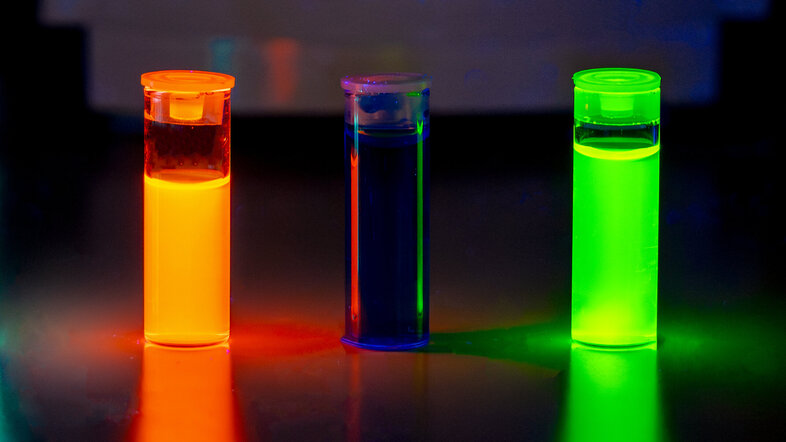Solar energy revolution
Excited by light
13. December 2023
Mimicking 'plant power' through artificial photosynthesis: an approach that could drive the solar energy revolution. Researchers at the University of Vienna are in a bid to chase this dream by trying to capture the sun's energy and storing it in chemical compounds. A report on how this works and why computer simulations are indispensable in the process.
The teams led by Leticia González and Davide Bonifazi from the University of Vienna are looking for compounds that are efficient light absorbers – a puzzle piece in the quest for artificial photosynthesis. The picture showst est tubes containing different molecules that can fluoresce – photons hitting these molecules excite electrons, leading to the emission of light. The properties of the molecules determine the colour. The tube in the middle contains a control compound that does not fluoresce.
© Alexander Bachmayer
Read more about it
- Research group of Leticia González
- Research group of Davide Bonifazi
- Cluster of Excellence Materials for Energy Conversion and Storage (MECS)
- Faculty of Chemistry of the University of Vienna
- Institute for Theoretical Chemistry
- Institute of Organic Chemistry
- Environment and Climate Research Hub
